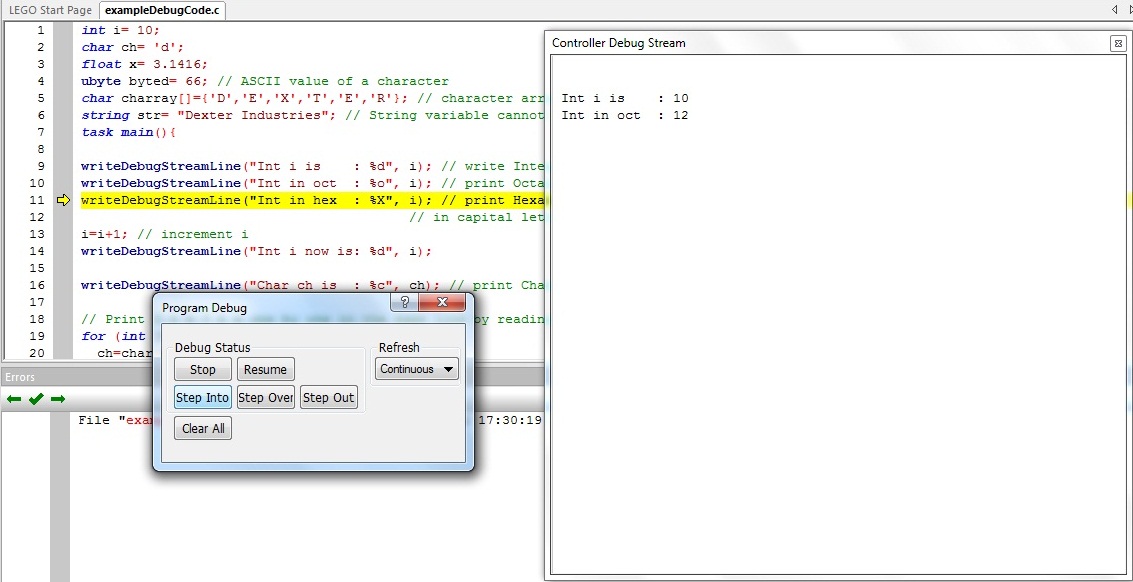

Students answer the Reflection Question for the chapter individually, as an in-class or homework assignment.Assign the Reflective Question for the chapter Groups may be asked to document their solutions in journals or logs, and especially to explain how they overcame the key problems identified at the start of the unitĤ.

Each group constructs its own solution to the Unit Challenge Groups proceed through the video trainer materials at their own pace, following the video instruction directly, and constructing solutions to the Try It! and Mini-Challenge steps as they goģ.
In a group, identify and note key capabilities the robot must develop, and problems that must be solved in individual engineering journals or class logs (e.g. View the introductory video as a class, or in individual groups, then review the challenge task for the unit Solutions will not require parts in excess of those included in the 45544 EV3 Core set, so it is sufficient to leave each team with one kit (although access to additional parts may allow students to construct more creative solutions to problems).Ī typical plan for an Introduction to Programming chapter is:ġ. Each pair of students should work together at one computer, with one EV3 robot.Ĭurriculum tasks are designed to involve some – but not extensive – mechanical consideration, so that hands-on design tasks may remain authentic without becoming logistically difficult. ROBOTC Intermediate Programming is designed for student self-pacing in small groups, preferably pairs. 
The Unit Challenge based on the original robot’s problem, for students to solve in teams as an exercise and demonstration of their mastery of the concept Topics.
 Semi-open-ended Mini-Challenges which ask students to use the skill they have just learned to solve a relevant small portion of the final unit challenge. Semi-guided “Try It!” exploration activities that expose additional uses for and variants on each robot behavior. Built-in questions that give students instant feedback on whether they understood each step correctly, to aid in reflection and self-pacing. Loops) by building simple programs that progress toward the end of unit programming challenge Step-by-step guided video instruction that introduces key lesson concepts (e.g. A LEGO® EV3 – scale version of the problem to solve with an EV3 robot. An introduction to a real-world robot and the context in which it operates. Additionally, there is a huge amount of support for teachers competing in Robotics Competitions for the first time included in the teacher’s guide.Įach project comprises a self-contained instructional unit in the sequence, and provides students with: The curriculum consists of two basic chapters (Motion and Sensing) and three Challenge Chapters (Pipeline Explorer, Barcode Scanner, and Automated Car Park) Each chapter is broken into units that teach key robotics and programming concepts. The ROBOTC Intermediate Programming for LEGO® MINDSTORMS EV3 Curriculum is a curriculum module designed to teach core computer programming logic and reasoning skills using a robotics context.
Semi-open-ended Mini-Challenges which ask students to use the skill they have just learned to solve a relevant small portion of the final unit challenge. Semi-guided “Try It!” exploration activities that expose additional uses for and variants on each robot behavior. Built-in questions that give students instant feedback on whether they understood each step correctly, to aid in reflection and self-pacing. Loops) by building simple programs that progress toward the end of unit programming challenge Step-by-step guided video instruction that introduces key lesson concepts (e.g. A LEGO® EV3 – scale version of the problem to solve with an EV3 robot. An introduction to a real-world robot and the context in which it operates. Additionally, there is a huge amount of support for teachers competing in Robotics Competitions for the first time included in the teacher’s guide.Įach project comprises a self-contained instructional unit in the sequence, and provides students with: The curriculum consists of two basic chapters (Motion and Sensing) and three Challenge Chapters (Pipeline Explorer, Barcode Scanner, and Automated Car Park) Each chapter is broken into units that teach key robotics and programming concepts. The ROBOTC Intermediate Programming for LEGO® MINDSTORMS EV3 Curriculum is a curriculum module designed to teach core computer programming logic and reasoning skills using a robotics context.








 0 kommentar(er)
0 kommentar(er)
